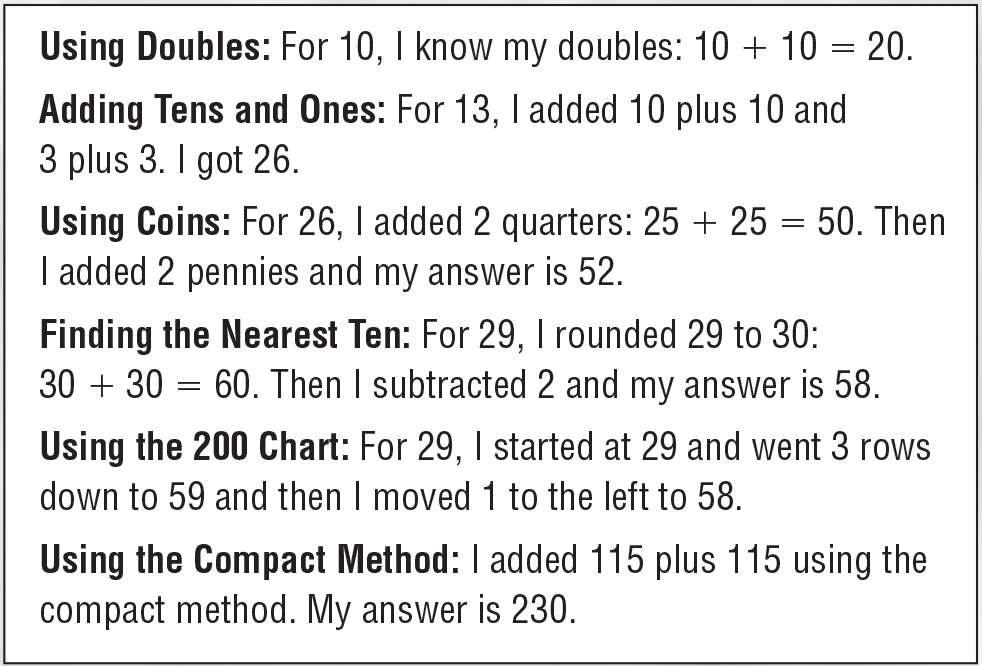Rule Machines
Est. Class Sessions: 2Developing the Lesson
Part 1: Doubling and Halving on the Rule Machine
Build a Doubling Machine. In Unit 1, students were introduced to the doubles and doubles +1 rule machine. Briefly review how rule machines work by telling students to imagine a machine that takes in numbers (input), does something to the numbers (rule), and gives you the results (output). Show students the doubles rule machine you prepared. Point out the rule on the machine.
Fold one of the rule machine rows you prepared in half. Write 4 on the left side or “input” side and ask:
As students say the output numbers, write the double on the right side or “output” side and hang the row on the display to make a rule machine. Repeat the procedure with other numbers as needed.
Tell students that it is their turn to try. Give each student one of the rule machine rows you prepared showing an input that they will double. See Materials Preparation. Have connecting cubes readily available. Encourage students to think of a variety of strategies for doubling the number.
Observe students’ strategies for finding doubles and choose a few students to share their strategies. As students complete their rows, have them add their rows to the rule machine you already started.
Strategies for Doubling. Upon completion, have students share their strategies for doubling numbers with the class. See Figure 3 for sample strategies.
Strategies for Halving. Use the Doubles Rule Machine you prepared to demonstrate finding half of a number. Show students a row with 10 as the output number.
Ask:
Give each student one of the rule machine rows you prepared showing an output that they will halve. See Materials Preparation. Have connecting cubes readily available. Encourage students to think of a variety of strategies for finding half of a number.
Observe students’ strategies for finding halves. Finding half of a number will be more difficult for students than doubling a number. Choose a few students to share their strategies. As students complete their rows, have them add their rows to the rule machine.
Upon completion, have students share strategies for finding half of a number. See Figure 4 for sample student strategies for finding half of a number.
















